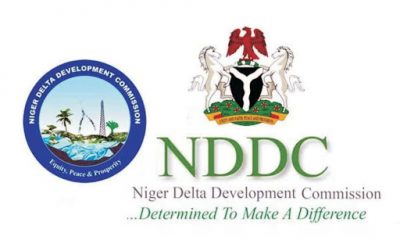Oil & Energy
Can OPEC+ Maintain Order As Oil Prices Rise?
After months of neglect from traders, oil became a hot commodity again this month as Brent surged over $65 a barrel and WTI topped $60 for the first time in a year. The rally cast a shadow over OPEC+’s resolve to keep cutting as much production as they are cutting now. Oil had been recovering steadily even before the United States lost some 40 percent of its oil production because of the Arctic cold wave that swept across the country. The Texas deep freeze certainly helped it, but its effect is already dwindling as traders take profits: Brent was down to less than $63 at the time of writing, and WTI had slipped below $60 a barrel. Yet a substantial upside potential remains that could increase internal tensions between OPEC+ members.
For one thing, U.S. demand for oil is recovering. The recovery, Bloomberg reports, started with the vaccination drive that began in December, and since then, refiners have been ramping up fuel production. The last couple of weeks have seen gasoline stocks rise but so has production.
While demand in the world’s top consumer of oil recovers, production is stalling. According to the EIA, U.S. output will remain below 12 million bpd next year as well. This imbalance will turn the United States into a net exporter this year and next, EIA said in its latest Short-Term Energy Outlook. But more importantly for OPEC+, this would push oil prices higher still, tempting barely compliant members to become even less compliant.
There is already discord within the extended oil cartel. The last time OPEC+ made a decision on production, it had to make a compromise decision to take into account the interests of those—like Russia—that insisted on some rollback of the deepest production cuts. And now, Saudi Arabia has said it would suspend its voluntary unilateral additional cuts that amounted to 1 million bpd and that Riyadh effected in its whatever-it-takes quest for higher prices.
That’s the clearest signal yet that OPEC’s de facto leader and biggest producer is becoming more optimistic about prices. Per the Wall Street Journal report that broke the news, however, the decision may yet be reversed if the price situation changes. Ironically, the very news that Saudi Arabia will add another million barrels daily to global supply is likely to have a negative effect on prices once the Texas deep freeze frenzy fizzles out.
But while Saudi Arabia continues to be ready to do whatever it takes, Russia sees the oil market as already rebalanced. Deputy Prime Minister Alexander Novak said as much last week as quoted by Russian media.
“We’ve seen low volatility in the past few months. This means the market is balanced and the prices we are seeing today are in line with the market situation,” Novak told TV channel Rossiya 1. Novak added that while last spring oil demand was 20-25 percent lower than its normal level at this time of year, by the end of 2020, the decline had shrunk to 8-9 percent. And Russia remains one of the barely compliant nations in the OPEC+ agreement. In fact, like Iraq, Russia has been producing over its quota.
Speaking of Iraq, the country reported an increase in oil exports for the first two weeks of February despite its attempt to reduce production of crude oil further to compensate for its overproduction last year. For the full month, according to Bloomberg, Iraq may exceed its self-imposed cap of 3.6 million bpd and even its OPEC+ cap of 3.85 million bpd.
And then there is Iran, which is already boosting production as it is exempt from the OPEC+ cuts and has big plans for its return on the international oil stage after U.S. sanctions are lifted. This has yet to happen, after Washington tied the removal of sanctions on Iran’s suspension of uranium enrichment activities.
In what could be seen as a gesture of goodwill, the U.S. earlier this month said it had rescinded a declaration by the Trump administration that all UN sanctions against Iran had snapped back. The declaration was void because it used provisions from the 2015 nuclear deal with Iran that the U.S. had left before making the declaration. In any case, Iran has reasons for optimism that it will be sanction-free soon and ready to pump more.
The discord between production cut hawks and production growth doves within OPEC+ will only deepen with the latest bullish news on oil. It already led Saudi Arabia’s oil minister to warn against complacency.
“I must warn once again against complacency,” Prince Abdulaziz bin Salman said earlier this week as quoted by Bloomberg. “The uncertainty is very high and we have to be extremely cautious. The scars from the events last year should teach us caution.”
Uncertainty indeed remains high, and then there is the threat of U.S. producers giving in to the temptation of WTI at over $60. For now, they have been resisting it, in all fairness, perhaps displaying the same caution bin Salman talked about this week. But at some point, the temptation may become irresistible, and what for OPEC is a nightmare scenario may happen again: U.S. producers ramping up output thanks to OPEC+ efforts to keep prices high enough to make it economical.
For now, there is no sign that OPEC+ will depart from its current policy of sticking with 7.2 million bpd in cuts until April. But, again, as Saudi Arabia’s top oilman said, “Those who are trying to predict the next move of OPEC+, to those I say, don’t try to predict the unpredictable.”
By: Irina Slav
Oil & Energy
FG Woos IOCs On Energy Growth
The Federal Government has expressed optimism in attracting more investments by International Oil Companies (IOCs) into Nigeria to foster growth and sustainability in the energy sector.
This is as some IOCs, particularly Shell and TotalEnergies, had announced plans to divest some of their assets from the country.
Recall that Shell in January, 2024 had said it would sell the Shell Petroleum Development Company of Nigeria Limited (SPDC) to Renaissance.
According to the Minister of State for Petroleum Resources (Oil), Heineken Lokpobiri, increasing investments by IOCs as well as boosting crude production to enhancing Nigeria’s position as a leading player in the global energy market, are the key objectives of the Government.
Lokpobiri emphasized the Ministry’s willingness to collaborate with State Governments, particularly Bayelsa State, in advancing energy sector transformation efforts.
The Minister, who stressed the importance of cooperation in achieving shared goals said, “we are open to partnerships with Bayelsa State Government for mutual progress”.
In response to Governor Douye Diri’s appeal for Ministry intervention in restoring the Atala Oil Field belonging to Bayelsa State, the Minister assured prompt attention to the matter.
He said, “We will look into the issue promptly and ensure fairness and equity in addressing state concerns”.
Lokpobiri explained that the Bayelsa State Governor, Douyi Diri’s visit reaffirmed the commitment of both the Federal and State Government’s readiness to work together towards a sustainable, inclusive, and prosperous energy future for Nigeria.
While speaking, Governor Diri commended the Minister for his remarkable performance in revitalisng the nation’s energy sector.
Oil & Energy
Your Investment Is Safe, FG Tells Investors In Gas
The Federal Government has assured investors in the nation’s gas sector of the security and safety of their investments.
Minister of State for Petroleum Resources (Gas), Ekperikpe Ekpo, gave the assurance while hosting top officials of Shanghai Huayi Energy Chemical Company Group of China (HUAYI) and China Road and Bridge Corporation, who are strategic investors in Brass Methanol and Gas Hub Project in Bayelsa State.
The Minister in a statement stressed that Nigeria was open for investments and investors, insisting that present and prospective foreign investors have no need to entertain fear on the safety of their investment.
Describing the Brass project as one critical project of the President Bola Tinubu-led administration, Ekpo said.
“The Federal Government is committed to developing Nigeria’s gas reserves through projects such as the Brass Methanol project, which presents an opportunity for the diversification of Nigeria’s economy.
“It is for this and other reasons that the project has been accorded the significant concessions (or support) that it enjoys from the government.
“Let me, therefore, assure you of the strong commitment of our government to the security and safety of yours and other investments as we have continually done for similar Chinese investments in Nigeria through the years”, he added.
Ekpo further tasked investors and contractors working on the project to double their efforts, saying, “I want to see this project running for the good of Nigeria and its investors”.
Earlier in his speech, Leader of the Chinese delegation, Mr Zheng Bi Jun, said the visit to the country was to carry out feasibility studies for investments in methanol projects.
On his part, the Managing Director of Brass Fertiliser and Petrochemical Ltd, Mr Ben Okoye, expressed optimism in partnering with genuine investors on the project.
Oil & Energy
Oil Prices Record Second Monthly Gain
Crude oil prices recently logged their second monthly gain in a row as OPEC+ extended their supply curb deal until the end of Q2 2024.
The gains have been considerable, with WTI adding about $7 per barrel over the month of February.
Yet a lot of analysts remain bearish about the commodity’s prospects. In fact, they believe that there is enough oil supply globally to keep Brent around $81 this year and WTI at some $76.50, according to a Reuters poll.
Yet, like last year in U.S. shale showed, there is always the possibility of a major surprise.
According to the respondents in that poll, what’s keeping prices tame is, first, the fact that the Red Sea crisis has not yet affected oil shipments in the region, thanks to alternative routes.
The second reason cited by the analysts is OPEC+ spare capacity, which has increased, thanks to the cuts.
“Spare capacity has reached a multi-year high, which will keep overall market sentiment under pressure over the coming months”, senior analyst, Florian Grunberger, told Reuters.
The perception of ample spare capacity is definitely one factor keeping traders and analysts bearish as they assume this capacity would be put into operation as soon as the market needs it. This may well be an incorrect assumption.
Saudi Arabia and OPEC have given multiple signs that they would only release more production if prices are to their liking, and if cuts are getting extended, then current prices are not to OPEC’s liking yet.
There is more, too. The Saudis, which are cutting the most and have the greatest spare capacity at around 3 million barrels daily right now, are acutely aware that the moment they release additional supply, prices will plunge.
Therefore, the chance of Saudi cuts being reversed anytime soon is pretty slim.
Then there is the U.S. oil production factor. Last year, analysts expected modest output additions from the shale patch because the rig count remained consistently lower than what it was during the strongest shale boom years.
That assumption proved wrong as drillers made substantial gains in well productivity that pushed total production to yet another record.
Perhaps a bit oddly, analysts are once again making a bold assumption for this year: that the productivity gains will continue at the same rate this year as well.
The Energy Information Administration disagrees. In its latest Short-Term Energy Outlook, the authority estimated that U.S. oil output had reached a record high of 13.3 million barrels daily that in January fell to 12.6 million bpd due to harsh winter weather.
For the rest of the year, however, the EIA has forecast a production level remaining around the December record, which will only be broken in February 2025.
Oil demand, meanwhile, will be growing. Wood Mackenzie recently predicted 2024 demand growth at 1.9 million barrels daily.
OPEC sees this year’s demand growth at 2.25 million barrels daily. The IEA is, as usual, the most modest in its expectations, seeing 2024 demand for oil grow by 1.2 million bpd.
With OPEC+ keeping a lid on production and U.S. production remaining largely flat on 2023, if the EIA is correct, a tightening of the supply situation is only a matter of time. Indeed, some are predicting that already.
Natural resource-focused investors Goehring and Rozencwajg recently released their latest market outlook, in which they warned that the oil market may already be in a structural deficit, to manifest later this year.
They also noted a change in the methodology that the EIA uses to estimate oil production, which may well have led to a serious overestimation of production growth.
The discrepancy between actual and reported production, Goehring and Rozencwajg said, could be so significant that the EIA may be estimating growth where there’s a production decline.
So, on the one hand, some pretty important assumptions are being made about demand, namely, that it will grow more slowly this year than it did last year.
This assumption is based on another one, by the way, and this is the assumption that EV sales will rise as strongly as they did last year, when they failed to make a dent in oil demand growth, and kill some oil demand.
On the other hand, there is the assumption that U.S. drillers will keep drilling like they did last year. What would motivate such a development is unclear, besides the expectation that Europe will take in even more U.S. crude this year than it already is.
This is a much safer assumption than the one about demand, by the way. And yet, there are indications from the U.S. oil industry that there will be no pumping at will this year. There will be more production discipline.
Predicting oil prices accurately, even over the shortest of periods, is as safe as flipping a coin. With the number of variables at play at any moment, accurate predictions are usually little more than a fluke, especially when perceptions play such an outsized role in price movements.
One thing is for sure, though. There may be surprises this year in oil.
lrina Slav
Slav writes for Oilprice.com.
-
Niger Delta4 days ago
D’Gov Emphasizes Agriculture In Industrialization … Tasks LG Health Authorities On Discipline
-

 Editorial4 days ago
Editorial4 days agoIsrael-Gaza War: Sustaining The Ceasefire
-

 Niger Delta2 days ago
Niger Delta2 days agoNDDC Begins N50,000 Monthly Payment To 10,000 N’Delta Youths
-

 Politics4 days ago
Politics4 days agoTinubu Sticking To ‘Snatch And Grab’ Agenda, Atiku Responds To Presidency
-
Politics4 days ago
Against Governors’ Resolution, Anyanwu Resumes Office At PDP Secretariat
-
Niger Delta2 days ago
Police Nab Pupil For Threatening Schoolmates With Pistol
-

 News2 days ago
News2 days agoRetirement: Ignore PSC’s Directive, Remain In Office, IGP Tells Officers
-
News4 days ago
NGO Implants Free Pacemakers Into 22 Cardiac Patients In PH

